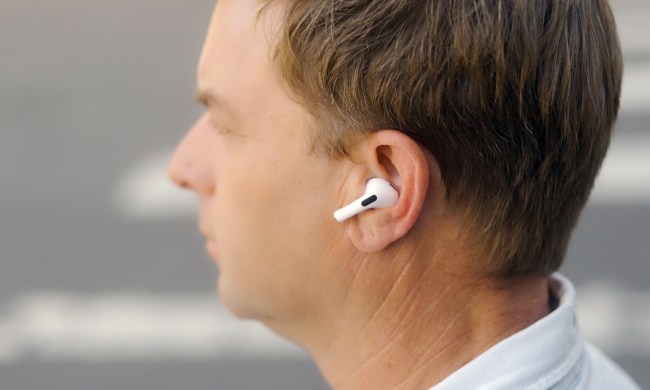With built-in smart features and A.I.-powered voice assistants, smart speakers provide the kind of hands-free assistance rarely found on traditional Bluetooth speakers. Smart speakers have gone from obscurity to near-ubiquity in just a few years, and if you haven’t already taken the plunge — or perhaps you’re thinking of upgrading — you may be wondering how Apple’s first foray into the smart speaker market, the HomePod, stacks up against its Sonos counterpart.
Here, we’ll take a deep look at how two very different products compare when it comes to price, sound quality, ease of use, and an array of other noteworthy features.
Further reading
Price
If you’re on a budget but still want great sound and the convenience of a voice assistant, this is an easy one. The Sonos One is $199, while the Apple HomePod is $299. We’ll get into why there’s a hundred-dollar price difference later in this comparison, and once you’ve had a chance to digest the finer points of each product you may well decide the HomePod is worth the extra cash. However, there’s no denying that the Sonos One is the less expensive option.
Winner: Sonos One
Voice assistant support
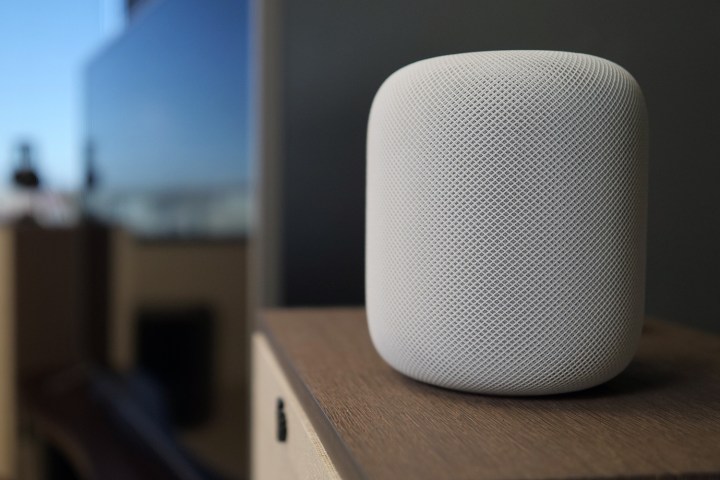
Depending on your preferred voice assistant technology, this one is also pretty easy to call. The Sonos One has had Alexa support from the get-go, but in 2019, Sonos finally made good on its promise to add Google Assistant. As of today, that means you can choose either of these voice-based A.I. to be on call when you holler. You can’t run them simultaneously, but using the Sonos mobile app makes it fairly easy to switch which one gets the privilege of listening for its respective wake word.
Apple, you will not be entirely surprised to learn, only supports its own Siri assistant on the HomePod. We’re sure there’s plenty of fodder for a debate over which virtual assistant is best, but we’re not going to pass judgment on that topic today. Instead, we’re going to give this one to Sonos simply because two choices is better than no choice at all.
Winner: Sonos One
Access to music
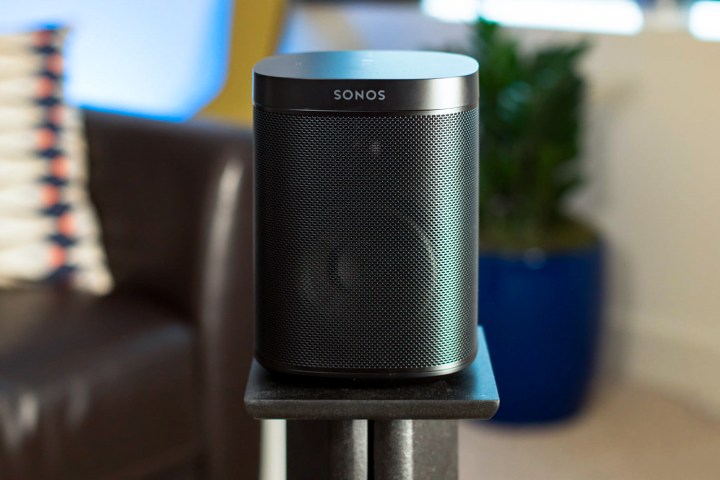
We’d argue that listening to music is the most common activity you’ll do with a smart speaker. Being able to fill a room with your favorite tunes just by calling out a few words is a magical experience that shouldn’t be missed. However, your smart speaker’s ability to grant your musical wishes is very much dictated by the music it can access, so this is one area that you should pay close attention to. It’s also not as simple as you may think.
When it comes to Sonos as a wireless music system, your choices for music sources are virtually unlimited. Via the Sonos app, you can add accounts for tons of services. Apple Music, Spotify, Google Play, YouTube Music, Pandora, Deezer, SiriusXM … the list goes on and on. Plus, Sonos can access your entire personal collection of music, whether it’s on your computer, a hard drive attached to your computer, or a hard drive attached to your network. It will happily find your Apple Music library and give you access to that, too. Got some tunes on your phone you want to play? No problem. You can even pipe in music from a turntable, if you purchase a Sonos Amp or Sonos Connect. It sounds like music nirvana, and it is, but things change a bit once you start using a voice assistant to try to access this incredible array of music.
If you set up a Sonos One with Alexa, you can access:
- Amazon Music
- Spotify
- TuneIn Radio
- Deezer
- Audible
- Pandora
- iHeartRadio
- SiriusXM
- Apple Music
You can also add Tidal via a dedicated Alexa skill, but it has very limited functionality.
If you set it up with Google Assistant, you get access to:
- Google Play Music
- Spotify
- YouTube Music
- Pandora
- Deezer
- Tidal
- TuneIn
- iHeartRadio
Clearly, your choice of voice assistant will affect the music you can ask for, though it doesn’t limit what you can run on Sonos using the app. Spotify users won’t even notice, but if you’re a Google, YouTube, or Apple Music user, you may find your voice A.I. choice has been made for you.
Apple’s HomePod, on the other hand, doesn’t want you to fret about all of these choices, so it keeps things simple: You can access Apple Music and your library of songs, and that’s it. If you choose not to subscribe to Apple Music, you can still access your personal tunes. That’s likely to change in the future — Apple intends to update the HomePod to support third-party music services like Spotify later in 2020.
Given that Alexa on Sonos One lets you access Apple Music and a slew of other choices, Sonos One once again prevails.
Winner: Sonos One
Sound quality
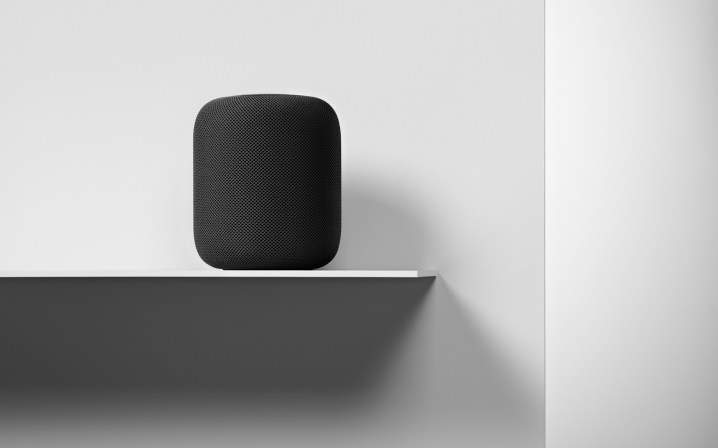
Unfretted access to music doesn’t do you much good if your smart speaker can’t fill your room with full, rich sound. The good news here is that both the Sonos One and HomePod sound fantastic. Each delivers the kind of full-range frequency response that you’d expect from companies known for building speakers — not technology. You’ll find that both deliver clarity, detail, and superb bass given their tiny footprints. However, the HomePod, with its 360-degree design, slightly more powerful drivers, and automatic calibration, does a better job of creating an all-encompassing envelope of sound. If you’re looking for a reason why the HomePod is $100 more expensive, this is it.
We should note that while a single HomePod does a better job of filling a room with sound than a single Sonos One, we did not test these smart speakers side by side in a stereo-pair configuration, which both are designed to do. Because the Sonos One has a more directional sound than the HomePod, traditionalists may prefer the way they perform when so arranged. But when used as a solo smart speaker, we think the HomePod takes this category.
Winner: Apple HomePod
Ease of use
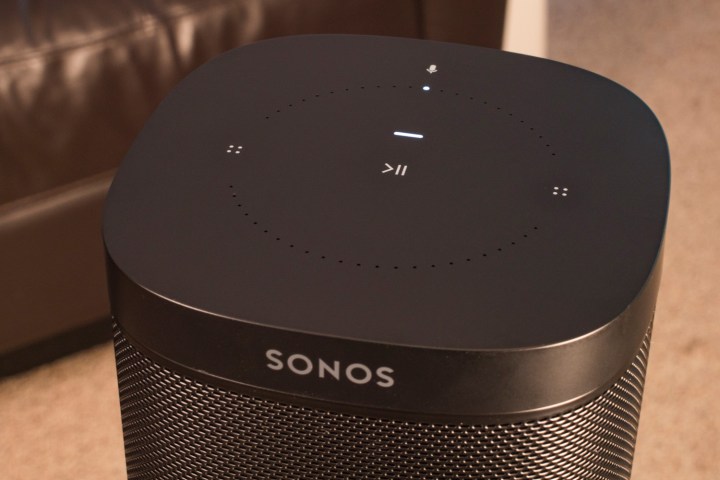
A smart speaker must be easy to use, otherwise, why buy one at all? But there are two kinds of usability to consider when dealing with a smart speaker: How easy it is to use it with just your voice, but also, how easy is it to use when you inevitably need to rely on a mobile app or other software to change settings or access deeper functionality? The Sonos One and the HomePod may both be smart speakers, but the approach each company has taken is very different.
The Sonos One is essentially the company’s highly successful Play:1 speaker, but reworked with the microphones, microchips, and software needed to turn it into a smart speaker. As such, you can control it with the Sonos mobile app, one of the best wireless speaker controls we’ve ever used. From a universal search that vets a range of music sources, to its innate ability to control multiple speakers throughout your home, it’s a pleasure to use, regardless of which Sonos product you’re using.
Because the Sonos One relies on third-party voice assistants to give its “smarts,” it will always be at the mercy of these companies when it comes to its voice-control chops. Alexa and Google Assistant each has its strengths — Google Assistant excels at providing answers to general queries and is particularly good at conversational-style follow-ups, e.g. “Who is Tom Cruise?” (answer), followed by, “How many movies has he been in?” For its part, Alexa’s strengths lie mostly in device control, especially if you own one of Amazon’s proprietary products, such as the Amazon Fire TV Stick. But neither Alexa nor Google Assistant is being developed to provide the Sonos One in particular with any special skills. Similar to how Microsoft Windows and Android are meant to run on hundreds of different computers and smartphones, the same is true of Alexa and Google Assistant.
The HomePod has been envisioned from the start as a Siri-powered smart speaker that is meant to be deeply embedded in the overall Apple ecosystem, and it shows. As is always the case with Apple’s walled-garden approach to design, this yields both good and bad results. On the one hand, Apple has complete control over the HomePod’s development as a product. Apple owns the hardware, it owns the virtual assistant, and it owns the only streaming music service the HomePod is currently compatible with. This means that the HomePod — in theory — should deliver a superb user experience, and for the most part, it does. You can use the HomePod as a speakerphone for your iPhone, you can get Siri to answer questions about the music you’re playing, and its integration with Apple’s HomeKit makes controlling smart-home devices a breeze (more on this later).
On the other hand, all of your interactions with the HomePod are primarily voice-driven, to the point where certain activities, like getting music to play in another room, cannot be accomplished any other way. We like that Sonos is not only a good voice-controlled speaker, it’s also got a fantastic app for when you want to do things the old-fashioned way. Having a choice is once again the key here, so Sonos takes this one too.
Winner: Sonos One
Smart home control
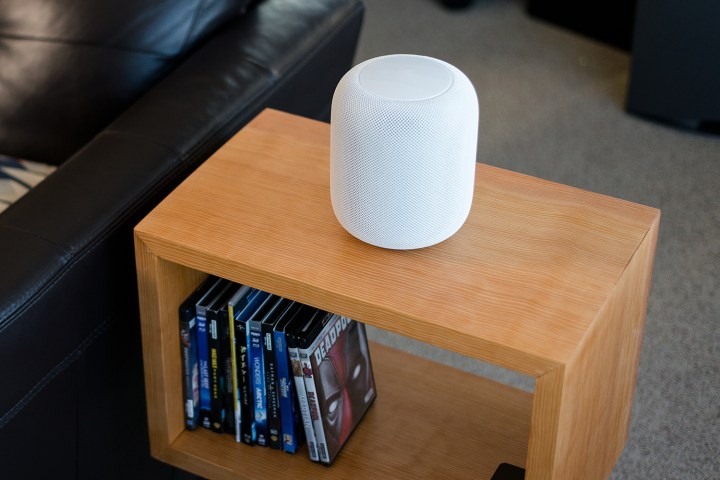
Beyond music, smart speakers are your voice-enabled gateway to an entire universe of smart home devices, from fridges to lightbulbs to thermostats. But as with so many things in our tech-driven worlds, what you can control is very much determined by a smart device’s compatibility with your chosen voice assistant. As we’ve already mentioned, the Sonos One can be set up with either Alexa or Google Assistant. Between these two A.I., you’re looking at being able to control nearly every smart device on the planet. But just like your voice assistant choice affects which music services you can ask for, it also affects which smart home devices you can control. For now, more devices are compatible with Alexa than Google Assistant, though, that may not be true forever.
What we can tell you is that Apple’s HomePod (and its sole A.I., Siri) only work with Apple HomeKit-compatible products. That’s not a deal-breaker by any means, as there are more and more of these devices entering the market all the time. However, you’ll rarely find a smart home product that is only HomeKit-compatible, whereas it’s much more common to find products that only work with Alexa and Google Assistant. HomeKit is a very well designed smart home platform, but once again, Apple has created it in such a way that it only works with MacOS and iOS devices. Because Siri won’t run on Android, this might create friction if your household isn’t 100% on board with Apple.
The Sonos One gives you more choices over your smart home devices and how to control them, so we’re giving it the win again. Keep in mind, however, that Apple is taking huge strides to improve compatibility.
Winner: Sonos One
Conclusion
By now the result should be clear: Your best bet for a smart speaker with awesome audio is the Sonos One. It’s less expensive than the HomePod, it integrates effortlessly into a whole-home wireless music system, and it supports virtually every music service on the planet. You also get your choice of voice assistant, a rarity in the smart speaker landscape, which often forces you into a relationship with Google or Amazon, depending on the product.
The more expensive HomePod kicks out fuller, richer sound thanks to its 360-degree design, but it requires nothing less than full loyalty to the Apple ecosystem to get the most out of it. It’s easily the best Siri device on the market, but if you aren’t impressed by Siri’s capabilities as a virtual assistant when compared with Alexa or Google Assistant, the HomePod is unlikely to make you a fan.
It’s possible that as Apple evolves its support for the HomePod, (and when it finally gets third-party music service support), we may reconsider our choice. However, for now, the Sonos One is the better smart speaker.



